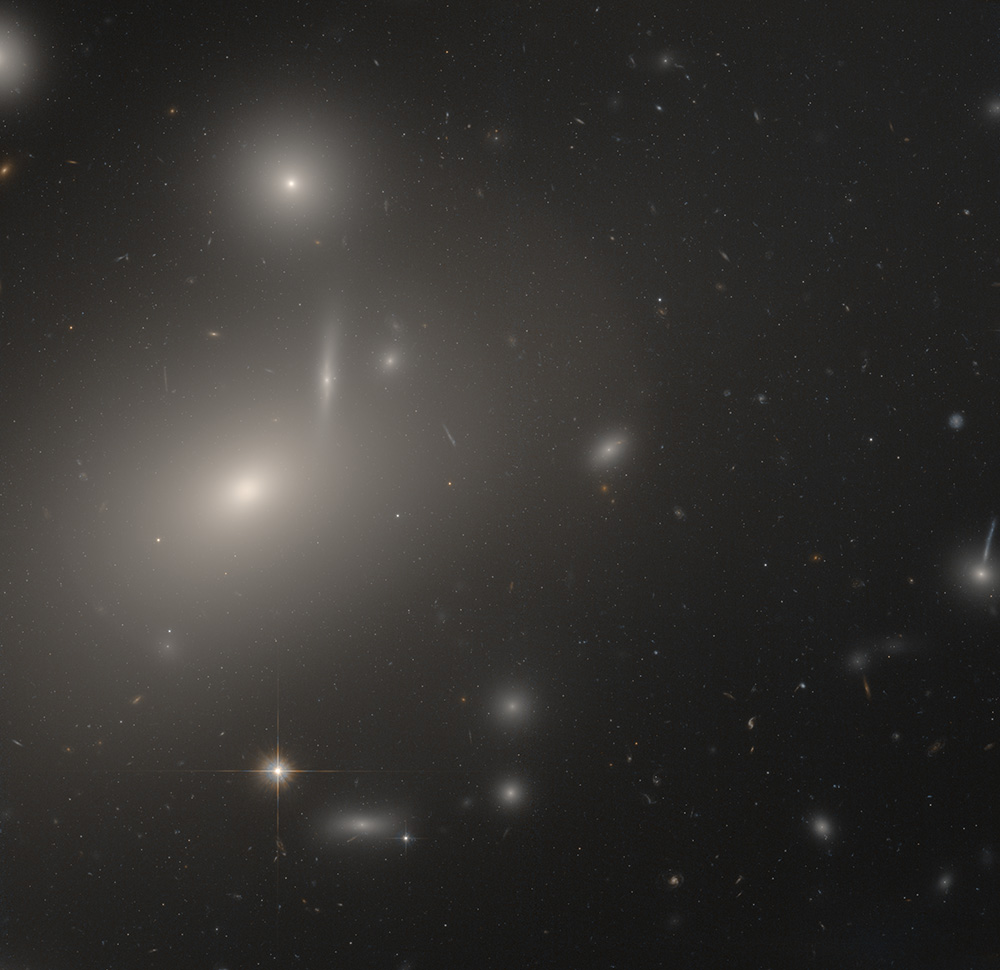
NGC 4889 (2015)
A dominant member of the Coma Cluster, remarkable elliptical shell galaxy NGC 4889 looms large over its domain. Within the cluster, only NGC 4874 (not shown) is brighter, and only just barely.
The faintly visible shells of the galaxy are evidence that the monstrous galaxy recently merged with a smaller galaxy.
Other details to notice include smaller and/or more distant elliptical galaxies, some of which are ghostly and faint. I have seen them called them fluffy galaxies in this recent press release. The nature of these ultra-diffuse galaxies and specifically how they manage to form as they do is still a matter of speculation.
Very few Milky Way stars are visible within the field. As usual, the ones with four spikes are most likely foreground stars. The hundreds of tiny, fainter point-like objects are globular clusters, many of which are likely orbiting NGC 4889.
Do you think that maybe some background galaxies show a curious alignment? You might not be imagining it. It’s possible that some weak gravitational lensing is going on. Weak gravitational lensing is detectable by taking measurements of all the background galaxies and seeing if they all seem a bit squished in a certain direction.
One final curiosity that I would like to note about NGC 4889: If you measure the brightness of the center of its nucleus, it is actually not as bright as NGC 4886, which is the smaller elliptical galaxy just above it in this image (that one skinny galaxy is kind of pointing toward it). The way some elliptical galaxies have diffuse cores while others have very sharp ones is something that perplexes me. It seems that even though NGC 4889 is much larger than NGC 4886, its nucleus is notably less dense than NGC 4886’s.
Red: ACS / WFC F814W (jb2i02020_drc)
Green: Pseudo
Blue: ACS / WFC F475W (jb2i02010_drc & jb2i03010_drc)
North is NOT up. It is 43.6° counter-clockwise from up.
Copyright information:
Hubble data is public domain, but I put a lot of work into combining it into beautiful color images. The minimal credit line should read: NASA / ESA / J. Schmidt

This work is licensed under a Creative Commons Attribution 3.0 Unported License.


